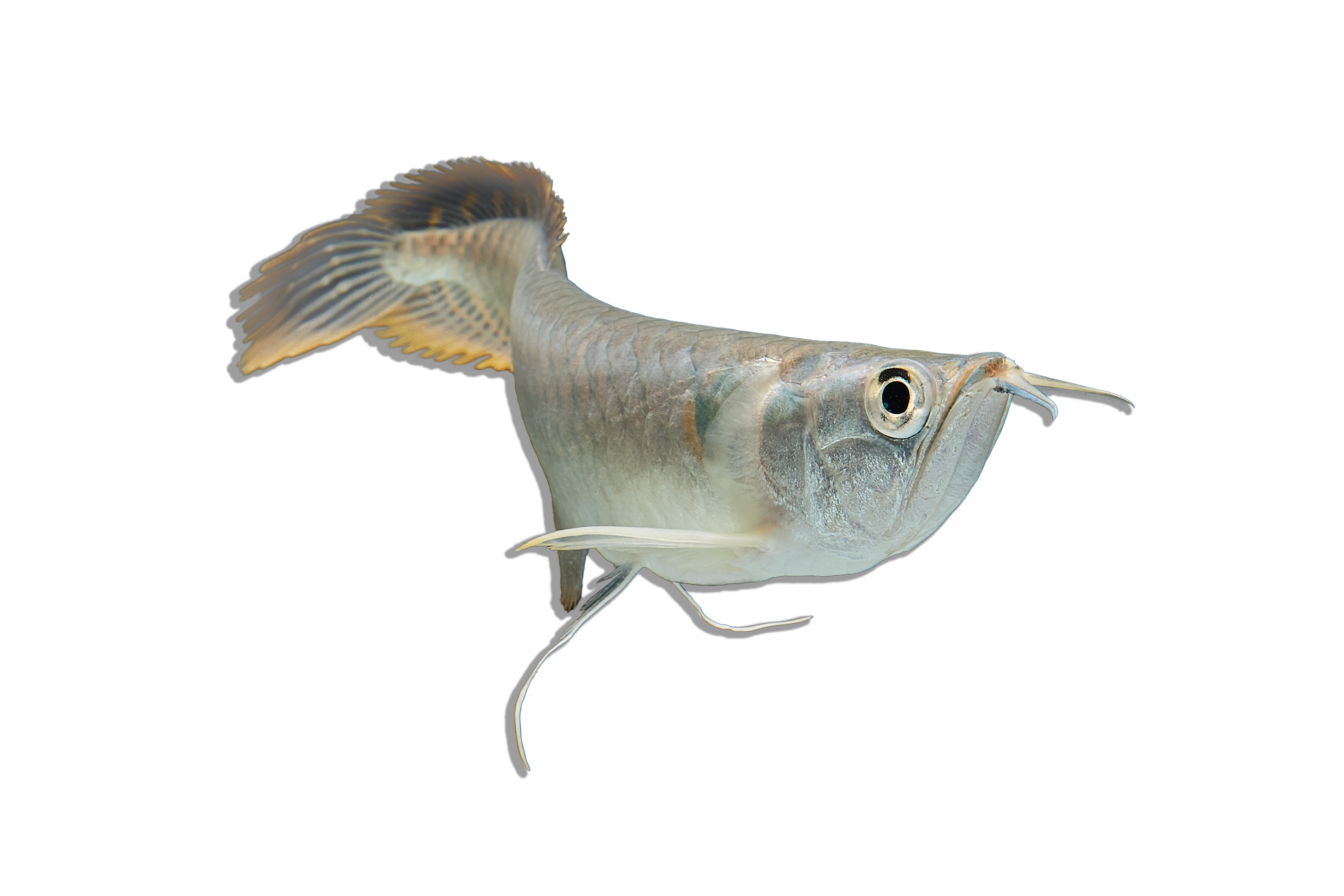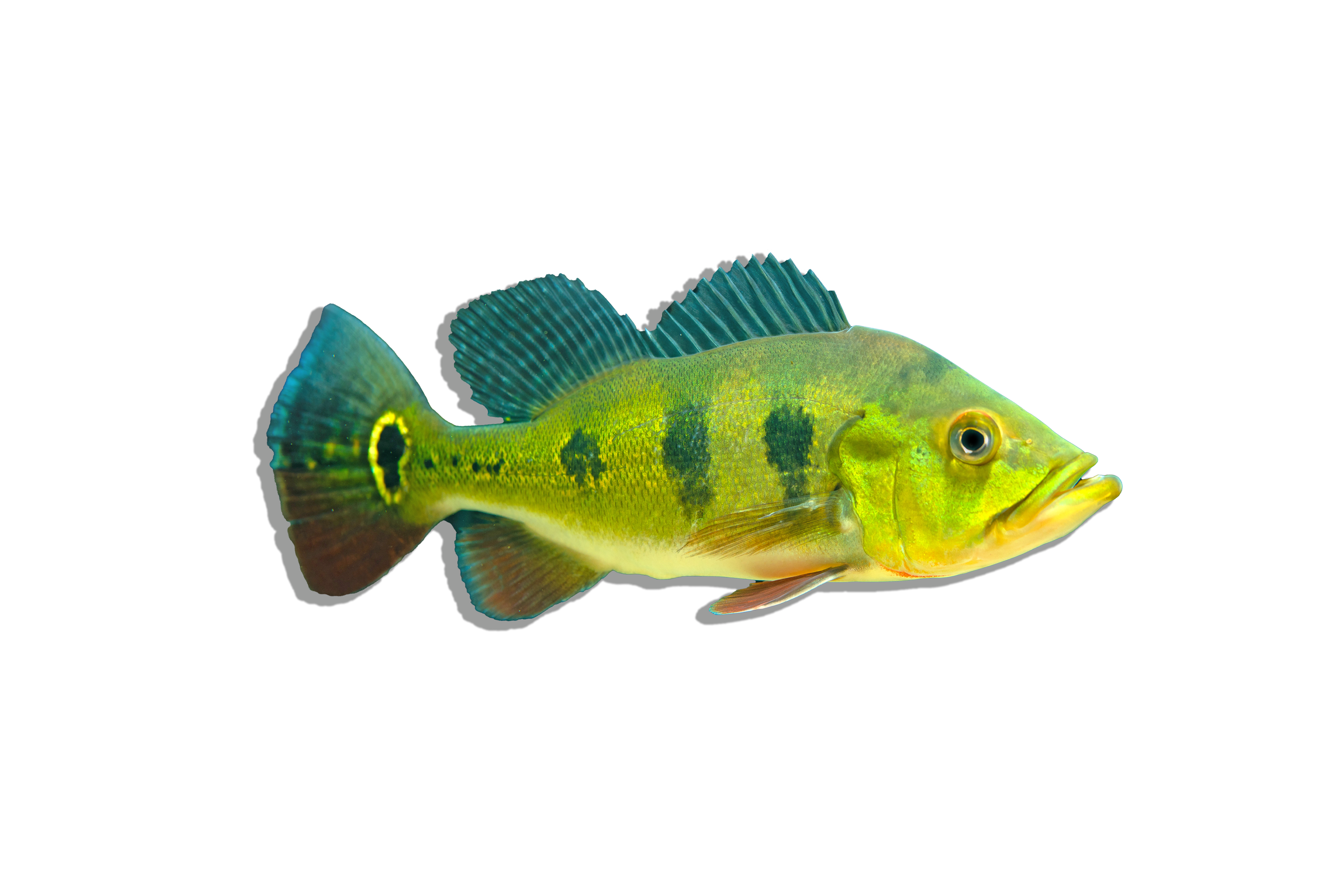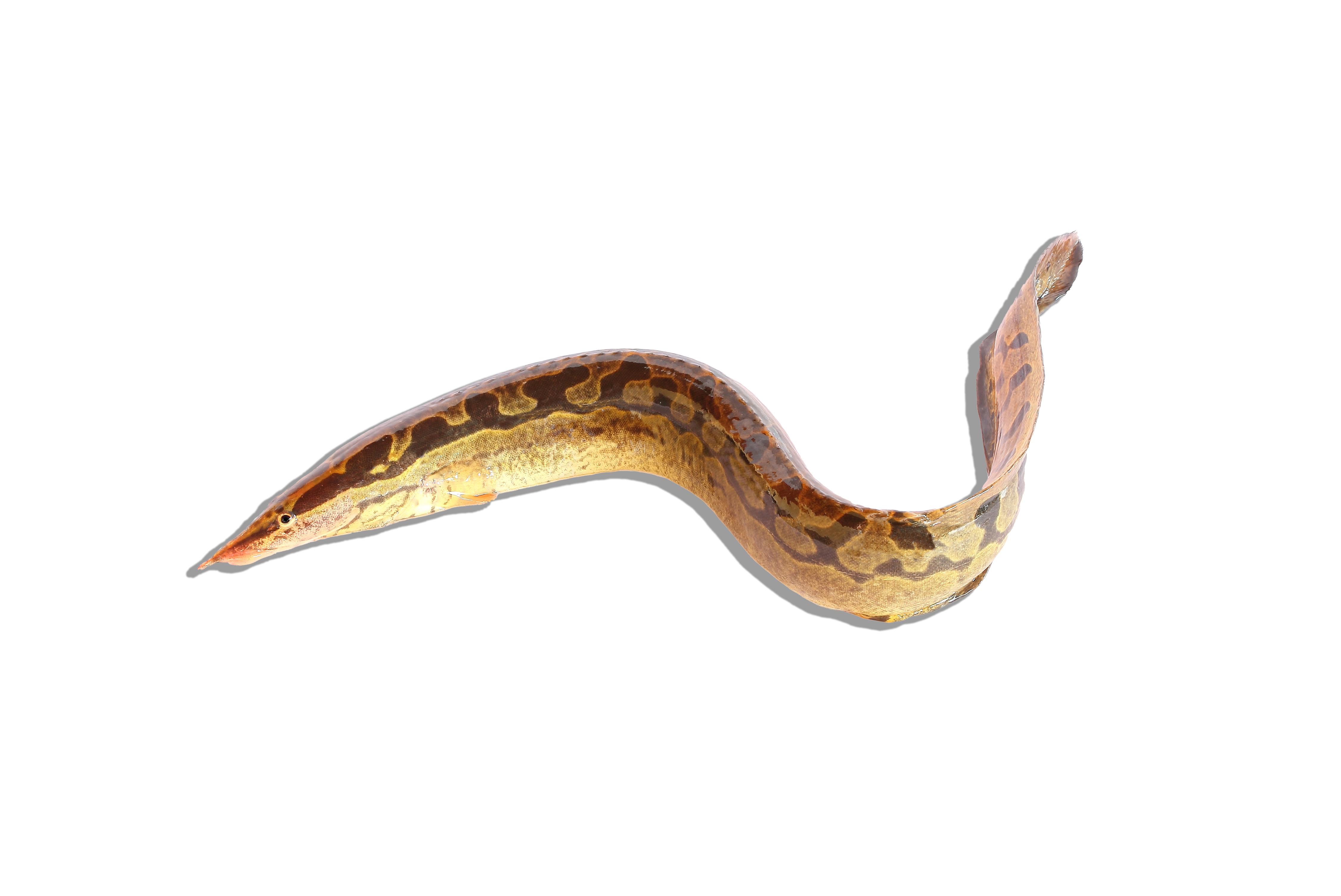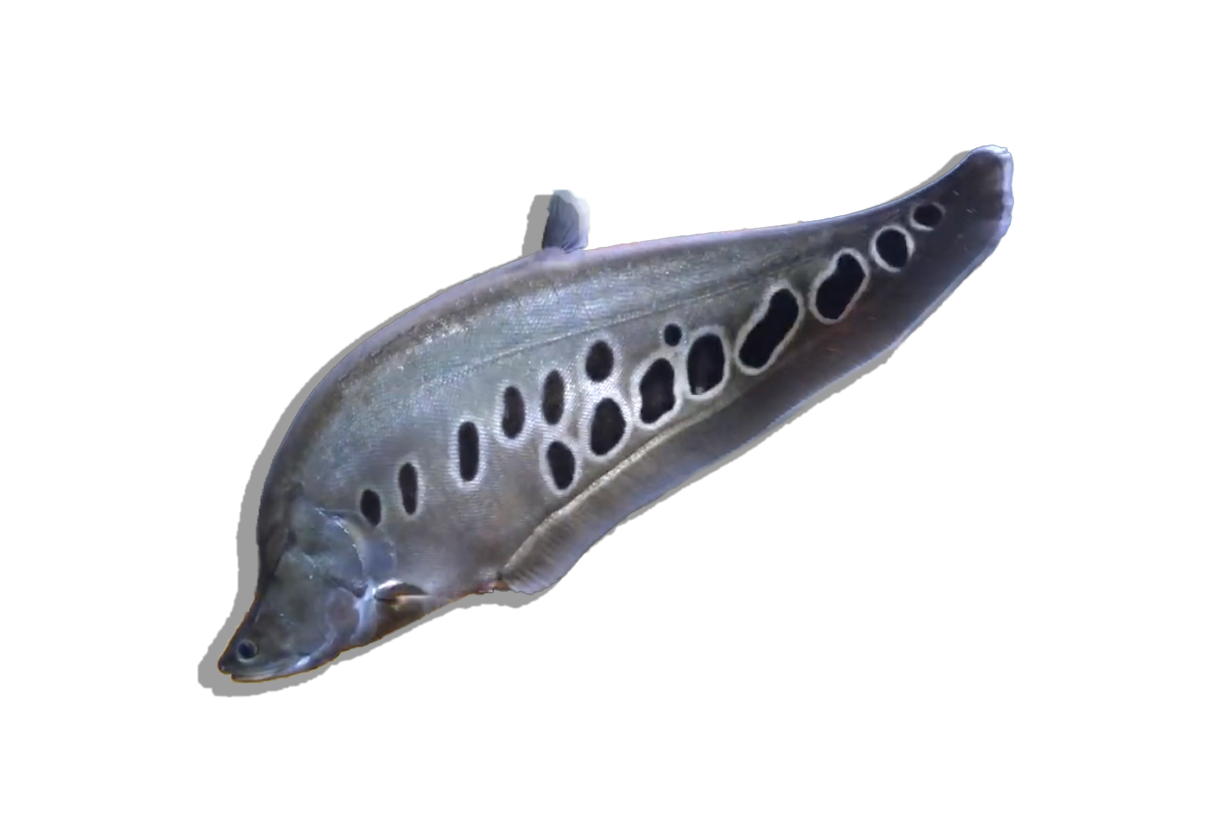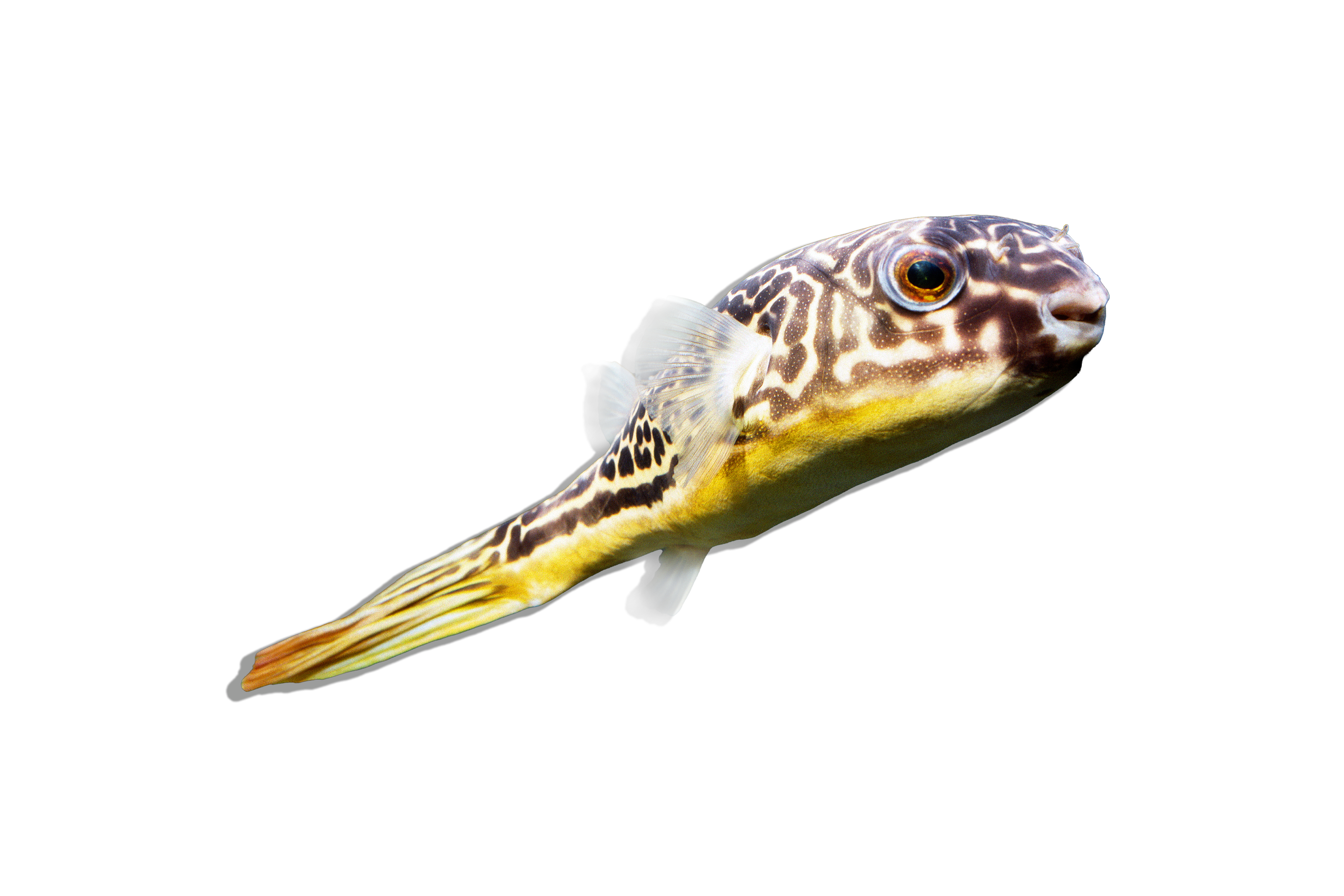Description
Common Name: Orinoco Dolphin Catfish
Scientific Name: Ageneiosus magoi
Other Names: None widely recognized
The Orinoco Dolphin Catfish is an intriguing freshwater fish known for its distinctive elongated body and dolphin-like snout. Its streamlined shape and large, expressive eyes contribute to its unique appearance. This species has a uniform silvery coloration, which enhances its sleek, elegant look. The Orinoco Dolphin Catfish is a nocturnal predator, adding an element of mystery and fascination to any aquarium.
Habitat and Distribution: The Orinoco Dolphin Catfish is native to the Orinoco River Basin in Venezuela and Colombia. It is typically found in slow-moving rivers, floodplains, and tributaries with sandy or muddy substrates. These waters are warm and slightly acidic, often rich in organic material. The natural habitat of this catfish includes areas with submerged vegetation and ample hiding spots, providing shelter and hunting grounds for this nocturnal predator.
Size and Lifespan: In the wild, Orinoco Dolphin Catfish can grow up to 18 inches (45 cm) in length. In captivity, they usually reach about 12-15 inches (30-38 cm). Their lifespan can range from 8 to 12 years, depending on the care and conditions provided in the aquarium. Maintaining optimal water quality, a balanced diet, and a suitable environment are crucial for their longevity.
Diet and Behavior: Orinoco Dolphin Catfish are carnivorous, primarily feeding on smaller fish, insects, and crustaceans in the wild. In an aquarium, they should be offered a varied diet of high-quality carnivorous pellets, live or frozen foods such as bloodworms, brine shrimp, and small fish. These catfish are nocturnal, becoming more active during the night when they hunt for food. They are generally peaceful towards other large fish but can be predatory towards smaller tank mates.
Breeding and Reproduction: Breeding Orinoco Dolphin Catfish in captivity is rare and challenging due to their specific environmental needs and behaviors. They require a large, well-planted tank with soft, acidic water and stable conditions to encourage breeding. The breeding behavior of this species is not well-documented, and successful reproduction typically involves creating conditions that closely mimic their natural habitat.
Aquarium Care and Tank Requirements: To keep Orinoco Dolphin Catfish, a large aquarium of at least 100 gallons is recommended to provide ample swimming space and accommodate their size. The tank should include plenty of hiding spots created with rocks, driftwood, and robust plants to reduce stress and mimic their natural environment. A sandy or fine gravel substrate is ideal, along with moderate water flow to simulate river conditions. Efficient filtration and regular water changes are essential to maintain water quality. Additionally, subdued lighting is preferred to accommodate their nocturnal habits.
Ideal Tank Mates: Orinoco Dolphin Catfish can be kept with other large, peaceful fish that share similar water parameter requirements. Suitable tank mates include large cichlids, other large catfish, and robust species like Silver Dollars. It is important to avoid housing them with small fish, as they may be seen as prey.
Difficulty Level: Intermediate. While they are hardy and adaptable, their specific dietary needs, nocturnal behavior, and large size require attentive care and a well-maintained aquarium.
Water Parameters:
- Temperature: 75-82°F (24-28°C)
- pH: 6.0-7.5
- General Hardness (GH): 3-12 dGH
- Carbonate Hardness (KH): 2-6 dKH
- Ammonia: 0 ppm (ideal), up to 0.25 ppm (max)
- Nitrite: 0 ppm (ideal), up to 0.25 ppm (max)
- Nitrate: <20 ppm (ideal), up to 40 ppm (max)
Additional Information:
- The Orinoco Dolphin Catfish's unique appearance and nocturnal behavior make it a fascinating addition to any large aquarium.
- These fish are known for their ability to sense and capture prey in low-light conditions, adding to their predatory allure.
- Fun fact: The elongated snout of the Orinoco Dolphin Catfish is not only distinctive but also highly functional, helping them to detect and capture prey in murky waters.


